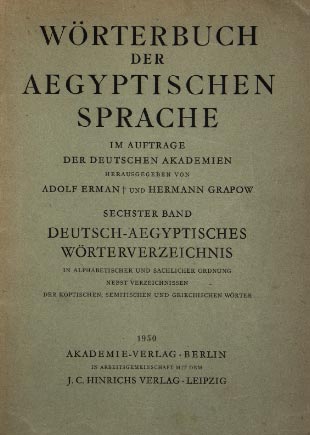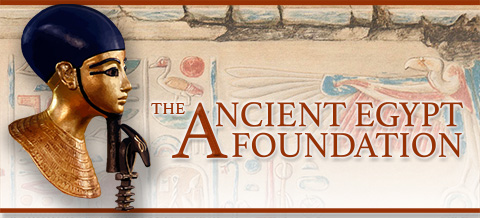THE HIEROGLYPHIC DICTIONARY OF
ERMAN AND GRAPOW, IN THE SIX ORIGINAL VOLUMES
Wörterbuch der Aegyptischen Sprache
(Dictionary of the Egyptian Language)
compiled by Adolf Erman and Hermann Grapow
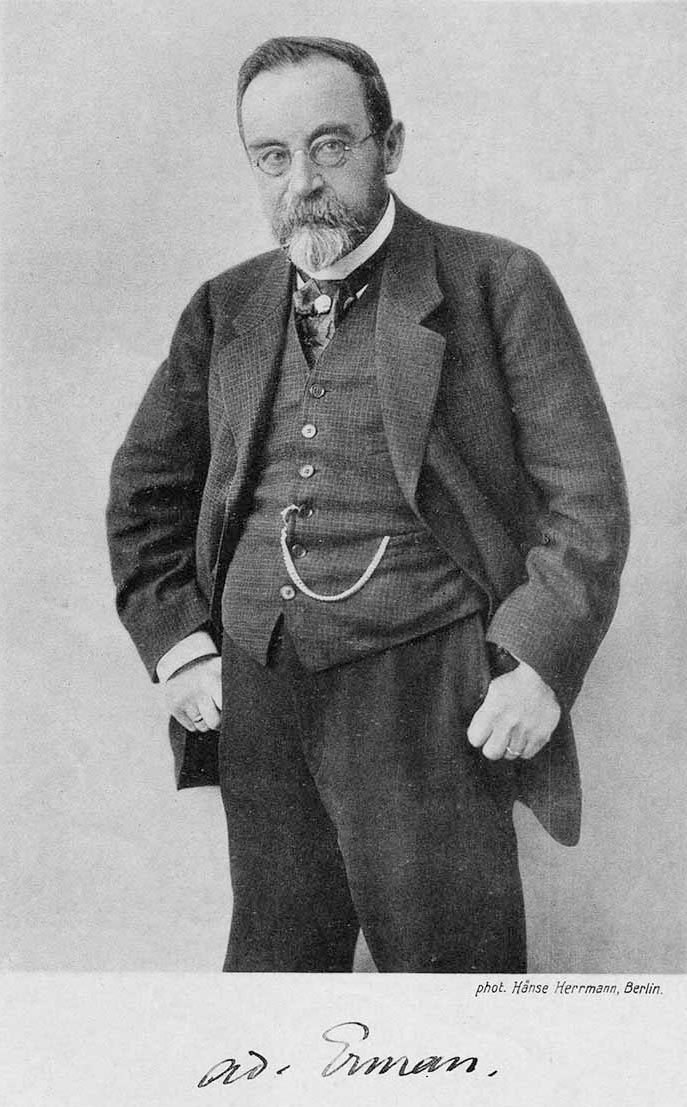
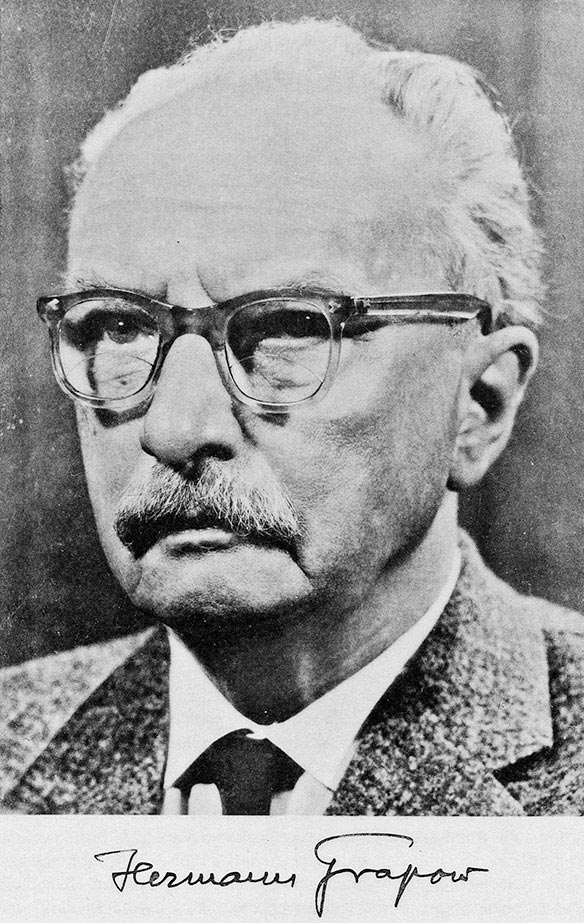
Here we make available without charge to Egyptologists everywhere that most fundamental tool for all textual work, which has until now been so rare and difficult of access in major libraries, the famous ‘Wörterbuch’, as it is so affectionately known, though wistfully so, considering how many people have wished they had their own copy. The relative inaccessibility of this dictionary has greatly hindered Egyptological textual studies, both by making textual work in some of the smaller countries impossible because they had no copy at all (at least before a modern reprint came into being), and making translation work painfully slow because scholars did not have the books conveniently at hand and had to save up their queries for visits to the library. This problem can now be resolved, because everyone can have his or her own copy beside himself or herself as he or she works, for the continual consultations which are always necessary when translating. Happy translating!
This dictionary is one of the greatest intellectual achievements of the 20th century, albeit known to few outside of Egyptology. Indeed, it is probably the greatest single achievement ever accomplished in Egyptological textual studies. By saying this we do not mean in any way to demean the gargantuan labours of Sir E. A. Wallis Budge, whose huge single volume of 1356 pages, An Egyptian Hieroglyphic Dictionary, was published in London in 1920. The first volume of the Wörterbuch was published at Berlin in 1926, only six years later. Because the Wörterbuch continued to appear over the subsequent decades, it is looked upon as more up to date and reliable than Budge’s dictionary, though perhaps the first volume might still be looked upon as also being somewhat outdated. One of the reasons why Budge’s dictionary is not liked by many Egyptologists is because he does not use the now conventional transliteration system, and uses far more English letters instead, qualified by vowel markings where necessary. He also gives transliterations and pronunciation suggestions for some consonants which are now rejected by the majority of Egyptologists in favour of variant forms, which they regard as more accurate (for instance, he is fond of tch…, which no one uses any more.) But Budge does include in his huge volume supplementary material such as king lists, geographical lists, and an index of English names, and those who regard Budge’s work as something to be ignored do so at the risk of missing some useful aids. Consulting Budge at the same time as Erman and Grapow is always worth doing, if only to see things from a different angle sometimes. Then one can make a judgement by comparing both, however much one may prefer Erman and Grapow for accuracy. Therefore, the Foundation will also be making Budge’s dictionary available as a pdf for free download in the future, so that everybody may also have his or her own personal copy of that as well. However, it should be said that inexpensive 1978 reprints of Budge’s dictionary exist and are readily available for purchase from various sellers. One can never have too many reference tools! All Budge’s books went out of copyright in 2004, and the Foundation will be putting others online from time to time. As for Erman and Grapow, a 13-volume softbound reprint was published in 1982, which can be found for sale as well, though at a price too high for most students to afford. The later supplements which appeared cannot be offered here because of copyright.
In Volume One of the Wörterbuch there is a Foreward (Vorwort) of 9 pages which describes the history of the commissioning of the great project in 1897 by the Prussian Academy of Sciences and how the project proceeded after that. It is notable that subsequent to the commissioning, it was 29 years before Volume One appeared. So prolonged are the labours of those who toil over ancient texts.
(PLEASE NOTE: Some browsers are not capapble of displaying large PDFs correctly and may crop the pages. If you are having problems right or ctrl click the link and download the files to your computer)
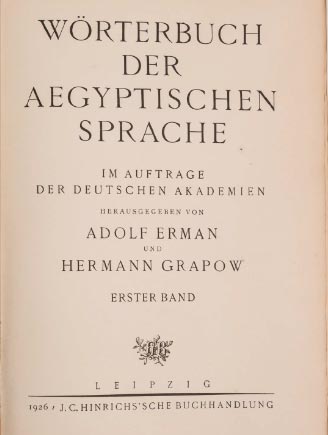
Download Volume I (1926) as PDF (69MB)
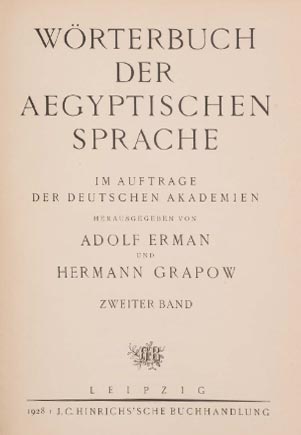
Download Volume II (1928) as PDF (54MB)
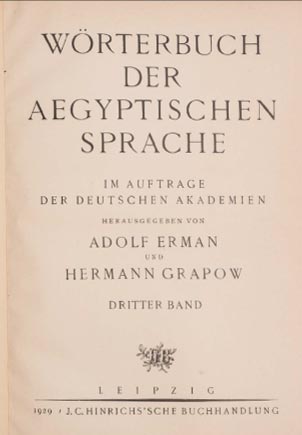
Download Volume III (1929) as PDF (54MB)
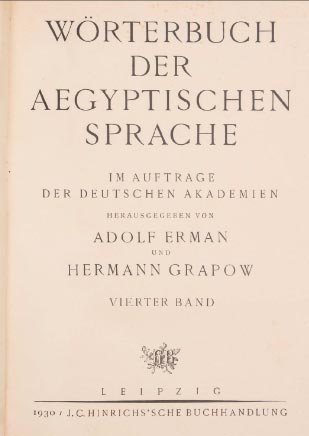
Download Volume IV (1930) as PDF (63MB)
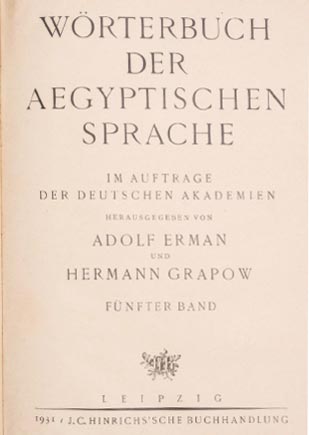
Download Volume V (1931) as PDF (67MB)
